My Summer Data Viz Reading List in 2025
My book picks for my freelance work in data viz: pricing, creative charts, and coding natural systems with JavaScript and a children's special.
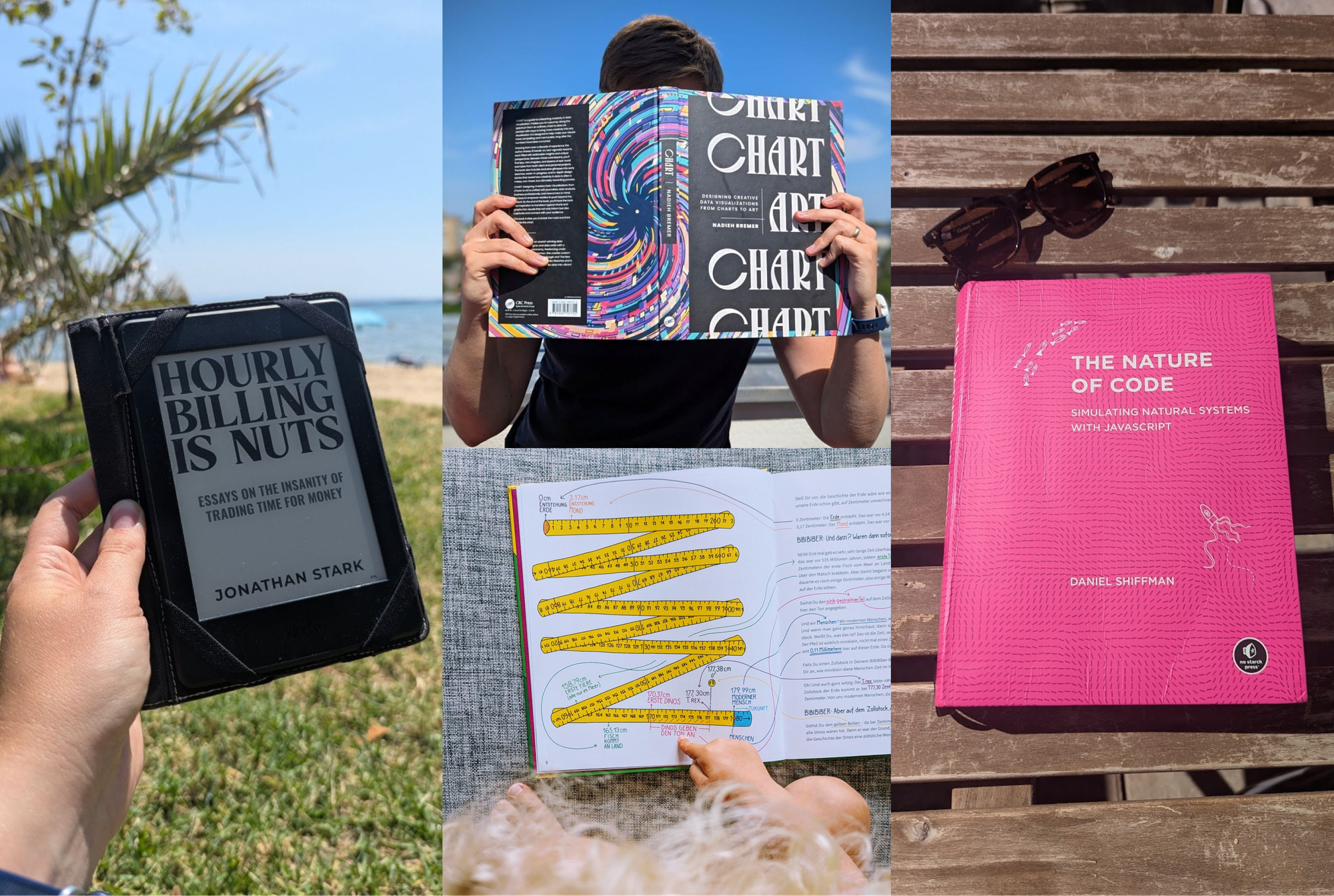
I love reading, and my book list seems endless, yet time is so limited. But during summer, I seem to find more of this mysterious thing called time for myself with a book. So each year I pick a few books that are either new or already had some life on my shelf to (finally) finish them.
Here are my picks related to my freelance work in data visualization for this year:
1.) “Hourly Billing is Nuts” by Jonathan Stark
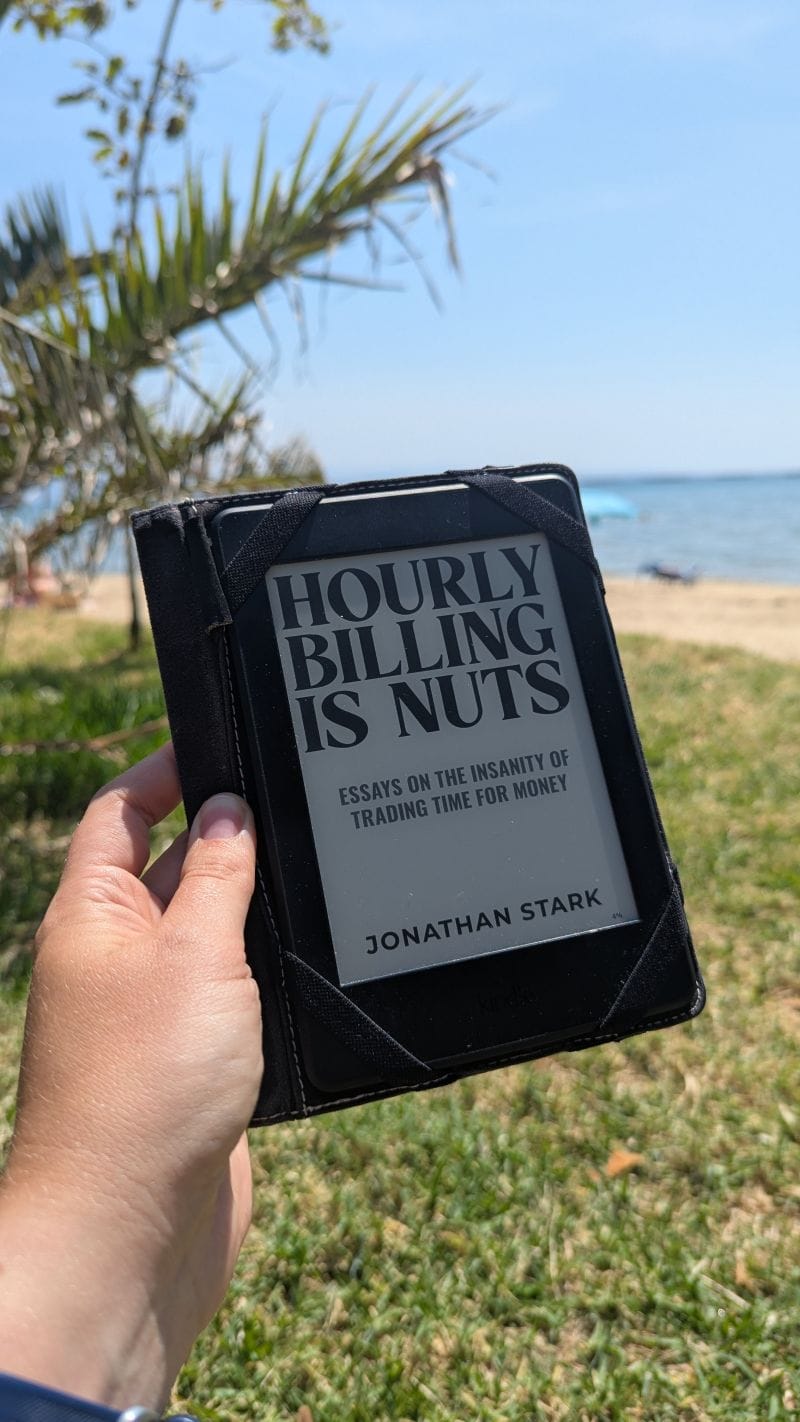
In my freelance work, the majority of my work is in collaboration with agencies. How to find a fair compensation for the work and value I provide is of course always part of the early project conversation. So far I charge hourly / daily rates as well as fixed prices for clear scope. In this book, I try to understand how to move more away from the time equals money thinking and more into the direction of value-based pricing while seeing the reality of projects.
My resume of the book is that it got me thinking about my pricing and scope discussions, but the level of depth is very shallow. I finished it in one afternoon at the beach.
See more about the book on Jonathan Stark's website.
2.) “CHART — Designing Creative Data Visualizations from Charts to Art” by Nadieh Bremer
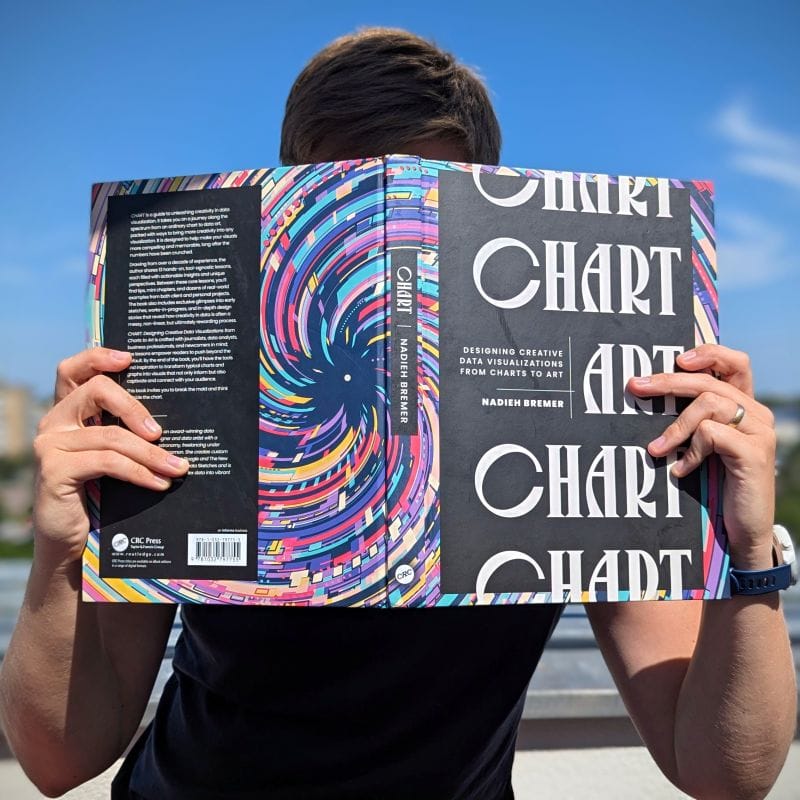
The UK/German custom process to ship this book to Berlin really tested my patience, but I finally received it right on time for summer. I was a beta reader for the book draft back in May, so already caught a short glimpse of it. But the printed hard cover version is just amazingly designed. I am a big fan of using a marker to highlight relevant sentences and write my thoughts next to the text, but I feel bad doing that with this beauty.
3.) “Nature of Code — Simulating Natural Systems with JavaScript” by Daniel Shiffman
I already started reading (and coding) this book a few months ago, and it's full of great explanations on how to simulate natural phenomena using P5.js.
My go-to data visualization library D3 already allows for an incredibly high level of customization as you piece together lines, paths, circles and so on. However, the pixel-based P5 approach, with all its mathematical functionality, enables me to create more complex animations that are closer to nature than what's possible with D3.
You can read it completely for free online here. In case you have not heard of Daniel Shiffman aka “The Coding Train” I highly recommend his videos on YouTube.
4.) Kids Special (German): "BiBiBiber hat da mal 'ne Frage" by Dr. Mai Thi Nguyen-Kim and Marie Meimberg
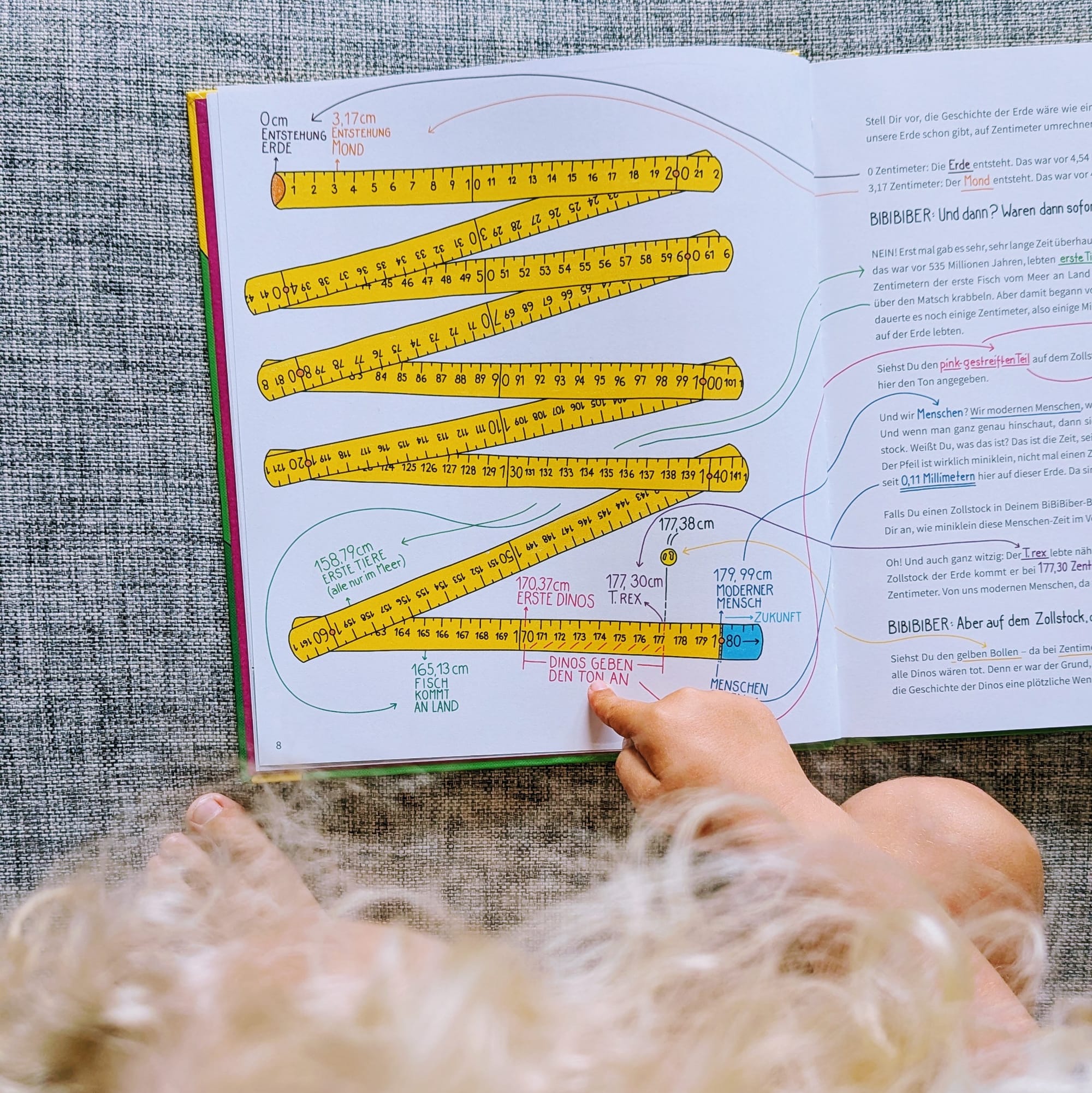
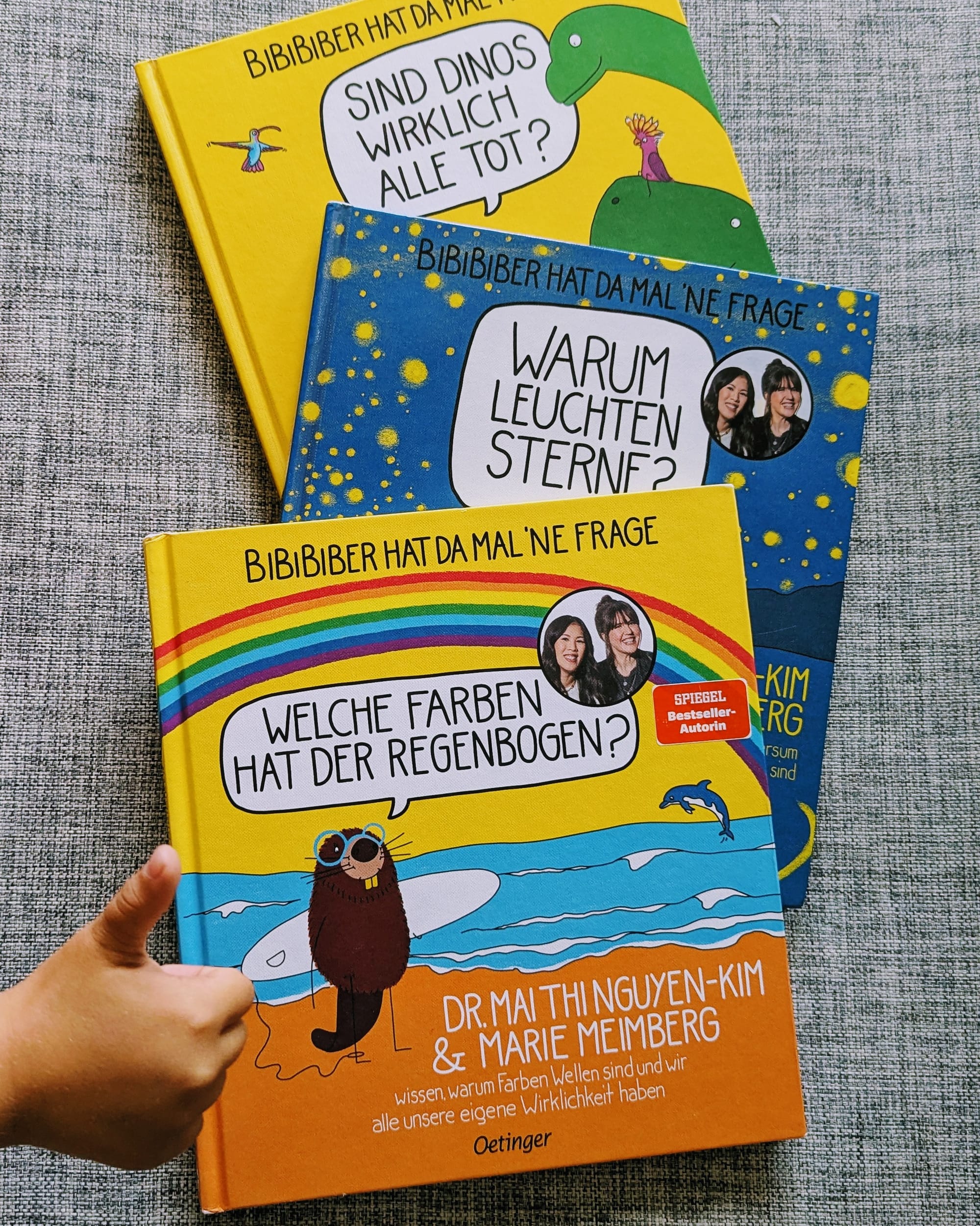
Really good children's books are rare, but this German book series "BiBiBiber hat da mal 'ne Frage" is highly requested by my daughter to be read aloud (and it's also a joy to read as a parent). It's a conversation between a curious beaver and two women: the scientist Dr. Mai Thi Nguyen-Kim and writer & illustrator Marie Meimberg.
The books break down complicated scientific topics step by step using lovely illustrations and also some data visualizations. For example, it illustrates the history of the Earth as a timeline on a folding ruler, showing how long the Earth existed before the dinosaurs arrived and when humans appeared.
All the facts in this children's book are based on real scientific sources, which are listed on the series's website. That's something I haven't seen before.
Check out the books series here.
PS: They also have super catchy songs that go with the books on Spotify.
What's on your reading list at the moment?

